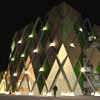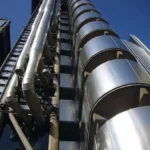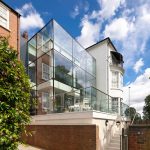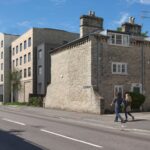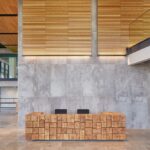Biomass Power Station Building, English Energy Project, Picture, News, Design Proposal Images
Biomass Power Station, Hertfordshire, England, UK
English Biomass Power Station design by Hinton Cook Architects
Situated in a rural location, the site resides in a greenbelt area. The brief was for the design of a permanent continuous structure to house a biomass power generation plant.
Design: Hinton Cook Architects
Biomass Power Station
21 Feb 2011
Biomass Power Station England
THE SITE
Contextually, the site is within close proximity of a hamlet approximately 0.5miles to the south and nestled between two busy UK motorways. The site gradually slopes from Northwest to south east with well established belts of woodland along the southern boundary. Taking advantage of levels, the site provided ample opportunities for a variation in massing/height and an opportunity to deliver a statement structure.
THE BUILDING
Concept
The scheme has been designed to minimise the visual impact upon its surroundings by employing a complex façade system, deliberately designed to break up the visual mass of the power plant, and primarily takes inspiration from the surrounding woodland. Due to the required scale of certain elements and the functional requirements of the power plant, it was imperative to keep the processes together, and focus on employing a continuous façade system.
This aims to encase the varying processes collectively within the plant whilst successfully addressing the landscape. The key components employed in breaking the visual mass of the building are the cladding system and the structural frame, both of which are designed to be prefabricated off-site, reducing on site demand.
Structure
An exposed timber lattice frame is designed to sit on the outer skin of the building and express an intricate play of formwork.
This primary structural frame is used to support the cladding system. In order to express the ‘flora and fauna’ of the woodland, the structure is left exposed in the form of an 8 meter intersecting diamond lattice representational of the woodland itself. By exposing the structure externally, the lines of the building are disrupted and hence the mass of the building is visually reduced.
The lattice form-work runs continually across all facades generating a ‘theme’ but varies in height to address the internal processes of the plant. The external frame ensures there are no spatial obstructions internally hence maximising internal area. Certain elements of the structure contain no cladding which in turn creates the gap allowing landscape to emerge and change the viewer’s perception of the building. In the evenings the intersecting structural joints are illuminated to reflect passing traffic movements on the motorways.
The external cladding system is made up of solid, opaque and translucent diamond panels, which have been offset behind the structural lattice frame to maximise internal area allowing for clear internal spans, whilst also allowing shadows to be cast on the façade. Both solid and opaque panels are haphazardly arranged in varying shades of green, which create an interesting façade.
To further enhance this, elements of the façade have been exaggerated and extended to enhance the building’s juxtaposition with the landscape when viewed from afar. The varying shades of green and the levels of translucency, are inspired by the dappled play of light and dark in the woodland – where breaks in the leaves allow light to penetrate and areas beyond the tree line to be seen – and creates a subtle pattern.
The panel cladding system also offers the opportunity for panels in certain locations to be replaced by living panels, which further blend the building with the surrounding woodland.
To further reduce the impact of the building on the Green Belt, sedum roofs are used to blend the building in within the landscape. A flat sedum base is proposed over the structural roof. A structural timber grid over a space frame allowing clear internal spans for plant equipment is proposed. This would also be integrated to the external structural wall members to ensure a consistent theme runs across the building.
CONCLUSION
The approach taken is intended to create a landmark building, sensitive to its Green Belt location and form an exemplar of architectural and environmental design for future power plants.
Biomass Power Station – Building Information
Project Team : Architect : Hinton Cook Architects Competition entry
Name of project : Biomass Power Station
Biomass Power Station images / information from Hinton Cook Architects
Location: Hertfordshire, UK
Another English Power Station Building:
Teesside Power Station Development
Planning permission approval for this innovative design for a biomass fuelled power station in northeast England
22 Dec 2009
INNOVATIVE DESIGN FOR A NEW AGE IN POWER
• Leading British designers, Heatherwick Studio to create biomass power station
• The landmark building will stand on the banks of the River Tees and provide power for over 50,000 homes
• Combining innovative technology and design, the power station will reduce carbon emissions by up to 80%
Power Station Architecture
Waste-to-Energy Plant Copenhagen, Denmark : BIG + others
Longannet Biomass Power Station, Scotland – featured on the Glasgow Architecture website
Comments / photos for the Biomass Power Station, Hertfordshire – English Architecture page welcome



